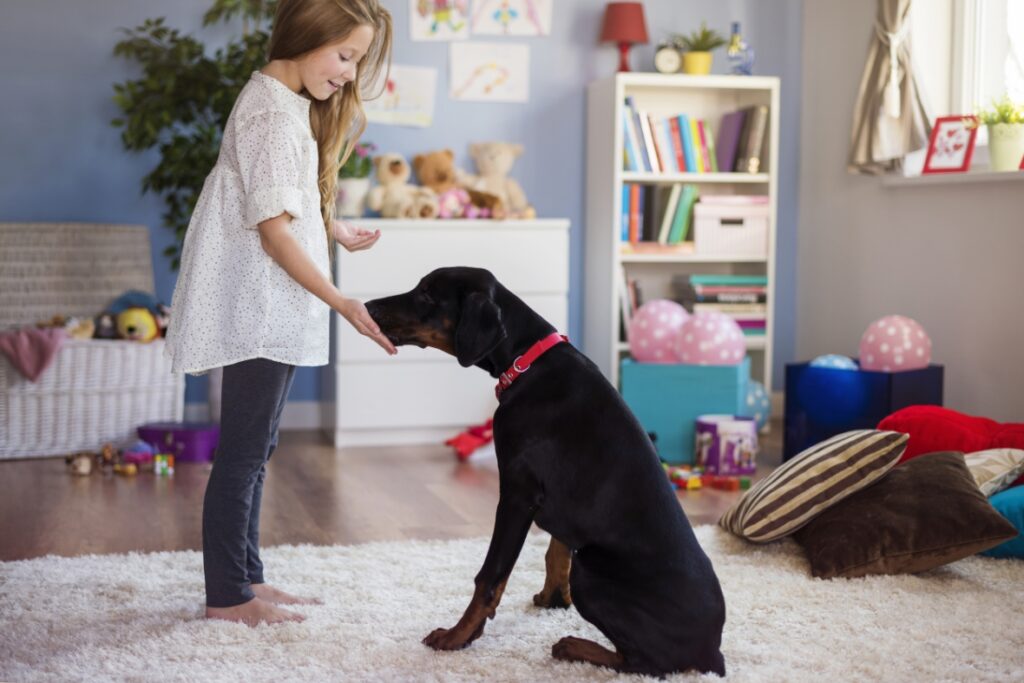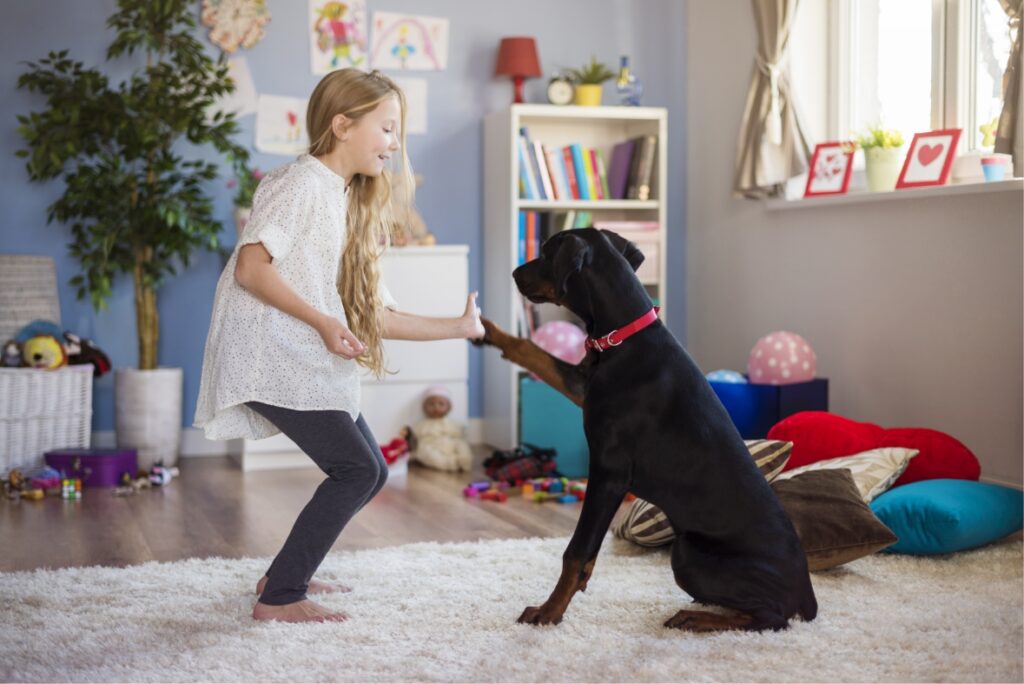Obedient dogs are lifelong companions in whom we can have complete confidence. It is for this reason that we entrust them with the care of what we hold most dear: our family, our house, our possessions.
But to delegate the care of your property to your adult dog, it is essential to ensure its training, at any age. Delegating the security of your family and property to a dog is a huge responsibility. In order to keep the trained protection behaviors intact, it is essential that training continue until the dog is retired from the job.

Why train your dog?
Training is the key to success. It is important to invest training time to achieve lasting results. Whether your dog is a life companion, or the guardian of your security, a trained adult dog requires education to acquire excellent obedience.
A large part of your dog’s training depends on your protection needs. This is why it is essential to personalize the training of your dog to best meet your expectations.
Beyond basic commands, the training of a guard dog should be adapted to the circumstances of your home. Alliance Protection Dogs tailors the training to suit the needs of our clients and the temperament of the dog. Alliance accounts for the environment you live in to make sure the training is appropriate to fit your protection needs.
It is essential to continue training throughout the lifetime of your canine companion, so your dog maintains an excellent level of obedience, even when fully matured.
How do you train your dog throughout his life?
The trainer must have good training concepts for quality education. The education basics are essential for a solid foundation to achieve a lifetime obedient companion. Starting at an early age (2 months) a puppy begins to learn basic commands, and a trustful and hierarchical relationship.
Education presupposes a positive relationship with your dog, a relationship that is established with the search for harmony. The attitude must be one of logic, affection, firmness and reward to anchor the right attitudes based on your individual needs.
Like all learning, repetition is necessary, with a fair amount of patience and accepting of mistakes. Success is always preceded by repetitions and learning from mistakes.
EDUCATION AND SOCIALIZATION
Education is the first step. It consists of teaching your dog how to adopt the desired behaviors, and to respond to the commands given. Indeed, if your dog runs around and barks constantly without paying attention to your commands, everyday life will quickly become problematic.
So your dog’s education must evolve as he matures into adulthood. Once mature, your dog will need continuted training in order to maintain the skills needed to be an excellent protection dog.
Socialization is an essential element in education during the early months of life. It contributes to a healthy relationship and attitude toward humans, without aggression and without fear.
TEACH YOUT DOG TO DISTINGUISH BETWEEN STRANGERS AND MALICIOUS PEOPLE
Once your dog has learned the basics of socialization and education, your companion will differentiate between loved ones and strangers. However, from the outset, your companion should not have unsuitable attitudes towards strangers (aggressiveness or fear, or even both).
The stability of your companion depends on his genetics, his socialization and his education. When these 3 founding elements are acquired, you benefit from a dog that exhibits a stable mind. Without stability, the risk is high of having an overly aroused dog, or one that assaults friends invited to your home.
From the base of stability previously described, we can instill in the dog to defend his relatives and his territory. It is about teaching him to watch, prevent and defend when necessary. Attack is the last resort in self-defense. Learning will allow your companion to accomplish this defense while maintaining control of the situation. Barking can be triggered at your request and of course biting in response to aggression must be exercised under your control. This learning requires adapted and repeated training.
Protection training is teaching your dog to distinguish between guests and malicious people.
ADAPT TRAINING TO YOUR NEEDS
Finally, the last step in training your dog is to tailor the training to your protection needs. For example, if you live in a housing estate with a busy street, it is best for your dog to know not to bark every time someone walks by.
On the contrary, if you live in a secluded area, it may be interesting for your dog to report any unusual event or behavior.
Call a professional
Whether it is a puppy or a trained adult dog for sale, it is always best to go through a professional for the education and training of your dog. Professional trainers like Alliance Protection Dogs understands the behaviors of young puppies through adult dogs, and how to educate and train them according to your protection needs.
Know-how, training and education of adult dogs: entrust your expectations to a professional and enjoy ideal protection from your dog!
